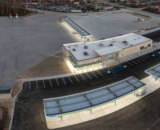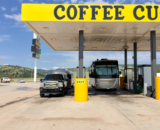Welcome to the newest post in our blog series, Darren’s Great Ideas! for Independent Operators.
Ten Tips to Improve Safety
As we start a new year, it is a good time to revisit your safety program. How did your safety performance last year stack up? Were you better or worse than normal when it comes to slips and falls, food-borne illnesses, forklift injuries, back injuries, etc.?
Good operators understand the costs associated with an unsafe work environment where job safety is not No. 1. Creating a safe work environment is crucial. Simply having the posters in and around the building will not make your operation in general any safer unless you execute and implement the programs and procedures related to job safety in every profit center.
In my travels to operator locations, I see signs a plenty. But, do you really have a safe work environment?
Here are ten tips to make sure you execute and maintain a strong safety program.
- Leadership and management should always, 100 percent of the time, follow all the programs and procedures for maintaining a safe and healthy workplace.
- Talk, talk, talk, talk safety all the time.
- All job candidates during the interview process should be questioned about their own safety habits, and all new employees should review and sign off on their understanding of your organization’s safety program during the orientation process.
- Address safety violations immediately, regardless of the outcome. It is more important to address the violation when no one has been harmed rather than after the fact. If you see a violation, address it. A stern conversation over a safety violation is a much better outcome then dealing with the aftermath of an exploded tire where safety gear equipment and procedures was not used.
- Everyone in the organization should understand your safety program responsibilities.
- Everyone in the organization should understand your general safety program guidelines. Examples include:
- How do you handle burns?
- How do you handle cuts?
- How do you safely handle chemicals?
- What are the proper fork lift and or tire change safety procedures?
- How do you prevent back injuries?
- How do you properly use protective gear?
- How can you prevent slips and falls?
- If you have a large location with significant staff and or multiple profit centers, it is a good idea to create a safety committee.
- Everyone in the organization should understand how to report a safety issue.
- It makes good sense to create a first responder person/team on each shift and at every profit center. Knowing what to do quickly can make a difference avoiding significant loss.
- There are specific safety concerns to each profit center. For example, fork lift injuries in the shops, food borne illness in the food service area and back injuries in the travel center cooler. It is critical that these specific position and or profit center safety concerns are covered in depth with your team members. Training and teaching after the injury has occurred is too little too late.
Subscribe to Updates
NATSO provides a breadth of information created to strengthen travel plazas’ ability to meet the needs of the travelling public in an age of disruption. This includes knowledge filled blog posts, articles and publications. If you would like to receive a digest of blog post and articles directly in your inbox, please provide your name, email and the frequency of the updates you want to receive the email digest.


